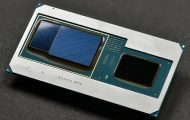Article – French language / Langue Française
Mise à jour du Freebox Server (Révolution/mini/One/Delta/Pop) 4.2.0 | Freebox.fr Blog
My Comments
Free.fr have pushed forward the idea of using a firmware update to deliver the WPA3 Wi-Fi network security standard to recent Freebox Server modem-routers that are part of their Freebox Internet service packages.
This is part of the FreeOS 4.2.0 major firmware update which also improves Wi-Fi network stability; implements QR-based device enrolment for the Wi-Fi network along with profile-driven parental control. It will apply to the Freebox Révolution which I see as the poster child of a highly-competitive French Internet service market and descendent devices like the mini, one, Delta and Pop.
The WPA3 functionality will be configured to work in WPA2+WPA3 compatibility mode to cater for extant WPA2 client devices that exist on the home network. This is because most home-network devices like printers or Internet radios won’t even have the ability to be updated to work with WPA3-secured networks.
At the moment, Free is rolling out updates to their mobile apps to support WPA3 on the mobile operating systems. It is most likely until Google, Apple and mobile-phone vendors offer WPA3 “out-of-the-box” with their smartphone and tablet platforms.
What I like of Free’s software-driven approach is that there is no need to replace the modem-router to have your network implement WPA3 Wi-Fi network security. It is very similar to what AVM did to enable distributed Wi-Fi functionality in a significant number of their FritzBox routers and other devices in their existing home-network product range where this function was part of a firmware upgrade.
It is avoiding the need for customers to purchase new hardware if they need to move to WPA3 network security and I would see this as a significant trend regarding European-designed home-network hardware where newer network capabilities are just a firmware update away.



